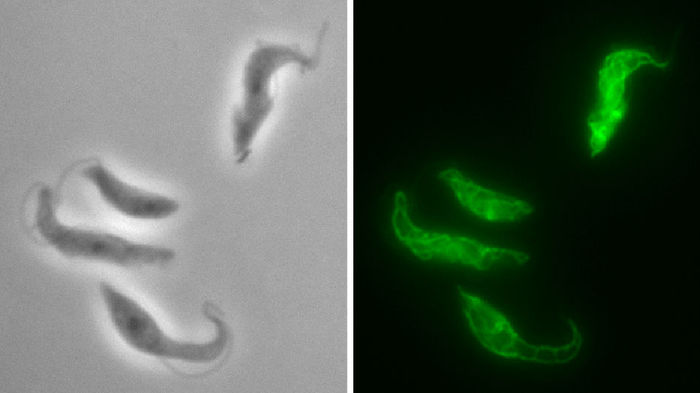
Penn State Assistant Professor of Biology Megan Povelones is working on research that looks at the significance of different mitochondrial shapes and how they might impact cell development and fitness.
MEDIA, Pa. — Megan Povelones, assistant professor of biology at Penn State Brandywine, has been named recipient of the distinguished National Science Faculty Early Career Development (CAREER) award by the National Science Foundation (NSF).
According to the foundation’s website, the CAREER program offers the NSF’s most prestigious awards in support of the early career development activities of teacher-scholars who most effectively integrate research and education within the context of the mission of their organization.
“This highly competitive award is an exceptional achievement,” said Cynthia Lightfoot, director of academic affairs at Penn State Brandywine. “It identifies Megan as one of the most promising young teacher-scholars in the nation.”
The five-year grant will allow Povelones to expand her current research on the structure and function of mitochondria.
“It was fun to think broadly for this award,” Povelones said. “Most grants are for two or three years, so a five-year grant really allows you to think big. It was challenging to think on that scale, but also exciting.”
For her research, Povelones uses Trypanosoma brucei, a single-celled parasite, to study the way that mitochondria change shape and generate energy in different environments.
“Mitochondria are the energy-generating organelles of the cell,” she said, “and they are very dynamic. Very few mitochondria have the characteristic kidney bean shape we see in textbooks. In fact, if you put a cell in a new energetic environment, the mitochondria can change shape to maximize energy production.”
Povelones seeks to understand the significance of different mitochondrial shapes and how they might impact cell development and fitness.
“We know that shape is important, but we’re not always sure how or why,” she said. “We do know that in humans, if the shape is changed, it can cause disease. These changes have been linked to Parkinson’s disease and certain genetic disorders.”
Povelones selected T. brucei as the model system for her research because of its unique cellular structure.
“Trypanosomes are interesting because they have an unusual mitochondrion,” she said. “Instead of hundreds of mitochondria per cell, they only have one. That means you can watch how the cell organizes its mitochondrion on a more basal level.”
As parasites, trypanosomes live in two different types of host: an insect called the tsetse fly, and mammals, such as a cow or human.
“Those environments have different nutrients available for the parasite,” said Povelones. “Living in a mammal’s bloodstream means access to sugars which are less abundant in the fly. Understanding how the parasite adapts its energy production to thrive in these different environments might be applicable to many other cell types.”
While excited to expand the scope of her work, Povelones especially looks forward to including more students in her research — a qualification that was a significant component of the NSF’s selection process.
“I’m recruiting students now for summer research,” she said. “I can do about 85 percent of my research in the labs at Brandywine. I also occasionally use a confocal microscope at the University of Pennsylvania to get higher resolution images. I’ve brought students with me to see that equipment as well.”
Povelones’ research will also include engineering students from Penn State Great Valley, who will work with her to print 3D mitochondrial models.
“A cell is a 3D object, but we often look at it in 2D,” she said. “We can look at cells in 3D thanks to software programs, but we want to see what effect it might have on a student to actually hold a tangible, 3D mitochondrial model.”
Through the NSF grant, Povelones hopes to contribute to her field and inspire students from multiple disciplines to take advantage of research as Penn State students.
“It’s easy to read a textbook,” she said, “but completely different to go into a lab and see how complicated it is to perform the research behind those textbook passages. When your experiment works, though, it’s rewarding. I’m excited to include students in that process.”






